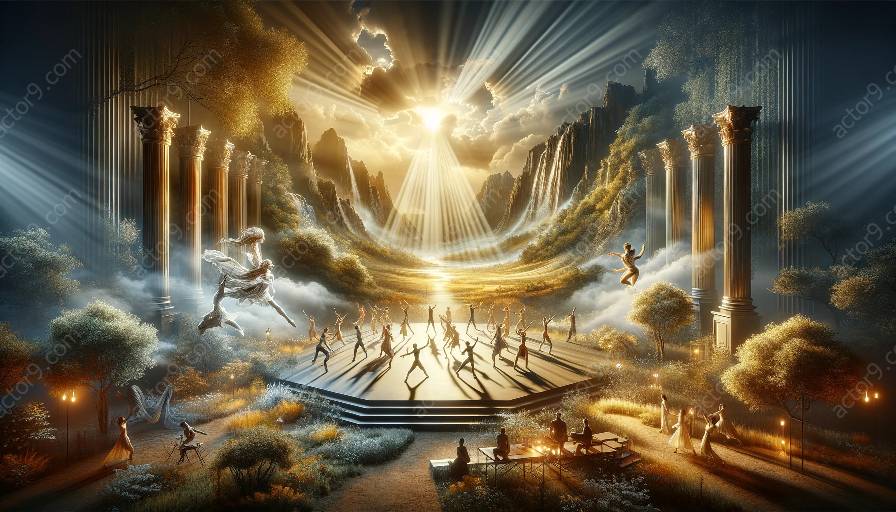Physical theatre thrives on the dynamic interplay of various sensory elements to convey a narrative, stir emotions, and captivate the audience. Central to this multifaceted form of expression are lighting, sound, and music, which play pivotal roles in crafting immersive experiences and enhancing the performers' expressions. In this comprehensive exploration, we delve into the significance of lighting, sound, and music in physical theatre, examining their individual and collective impact on the overall performance.
The Role of Lighting in Physical Theatre
Lighting, as a fundamental component of physical theatre, holds the power to transform the stage, setting the mood, and guiding the audience’s focus. Through the strategic use of lighting, physical theatre productions can create dramatic atmospheres, evoke specific emotions, and underscore the narrative's key moments. The interplay of light and shadow becomes an integral part of the choreography, accentuating the performers' movements and gestures. Moreover, lighting serves as a tool for sculpting the space, allowing for seamless transitions and transformations that shape the theatrical landscape.
Sensory Immersion: Sound and Music
In physical theatre, sound and music act as vital companions to the visual spectacle, enriching the audience’s engagement with the performance. The rhythmic beats, melodic undertones, and ambient sounds intertwine with the movements and actions of the performers, elevating the sensory experience. Sound effects, such as footsteps, whispers, or environmental cues, contribute to the creation of immersive and realistic onstage environments. Meanwhile, musical compositions and live performances complement the dramatic sequences, infusing them with heightened emotional depth and resonance.
Harmonizing Elements in Performance
Understanding the interconnectedness of lighting, sound, and music is paramount in physical theatre, as these elements harmonize to shape the narrative landscape. The choreographed interplay between light, sound, and music amplifies the storytelling, accentuates the performers' expressions, and adds layers of depth to the audience's perception. From evoking tension and suspense to fostering moments of tranquility and introspection, the orchestration of these sensory components underscores the nuanced artistry of physical theatre.
Embracing Innovation and Creativity
As physical theatre continues to evolve, so do the possibilities for integrating innovative technologies and experimental approaches to lighting, sound, and music. From interactive light installations to avant-garde soundscapes, the boundaries of traditional theatrical conventions are continually pushed, giving rise to groundbreaking explorations of sensory immersion. This spirit of artistic experimentation opens avenues for fresh interpretations and reimagining the role of lighting, sound, and music in physical theatre, ensuring its continued relevance and allure in the contemporary performing arts landscape.




































